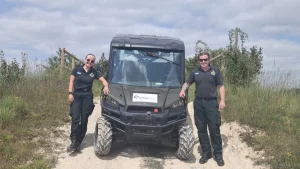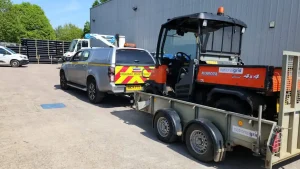Corporate manslaughter legislation has prompted many HR departments who have previously had little or no dealings with driver training to look into what is needed. We’ll also explain how Fleet Training companies like Beyond Driving can help.
The principle at issue here is that if a company’s Health & Safety regime for employees who drive at work is not up to standard, the company (not including individuals) can be prosecuted if a death occurs. Companies have a duty of care to their employees and to other road users for Health & Safety breaches. Individual road traffic offenses will still be the responsibility of the driver, though inadequate training for work related driving may bring these within the duty of care of the company.
So what can companies do?
– Ensure that drivers understand their responsibilities in regard to safe driving and vehicle maintenance through risk assessment and basic training.
– Ensure that vehicles are fit for purpose and maintained in a safe condition, with auditable paper trails.
– Have written and agreed guidelines for work related driving, including clearly laid out responsibilities and disciplinary consequences.
None of these things should be hard or expensive to acheive, but they will need for the company as a whole to take safe driving seriously – from board level down to employee drivers.
Where should we start?
– Fleet, HR or H&S managers should make themselves familiar with H&SAW documents which relate to driving at work. (See Fleet Driving Legislation)
– Have all employees whose job includes driving risk assessed by a suitably qualified individual. (see Driver Risk Assessments and Driving Assessor Training)
– Use the results of the risk assessments to plan a driver training programme suitable to the needs of individual drivers and their specific jobs and vehicles.
– Draw up company guidelines for all drivers, including journey planning, vehicle safety checks, license and paperwork checks.
– Train all drivers to be able to carry out checks on their vehicles. (see On Road Fleet Driver Training)
– Ensure all paperwork is up to date and easily auditable in the even of an incident.
– Monitor all incidents, using information to inform company policy and further training requirements.
– Update all policies and risk assessments on a regular, preferably yearly basis.
If these simple steps are followed, with the whole company involved and taking responsibility as a whole for driver safety, then the exposure to any H&S legislation (not just Corporate Manslaughter) should be minimised.
How much will it cost?
Not a lot, and it could actually save you money.
1. By assessing and training your drivers, you can reduce the risk of incidents and collisions, keeping drivers and vehicles working and earning, while reducing fleet insurance costs.
2. Defensive driver training inherently promotes fuel efficient driving, reducing fuel costs.
3. Having efficient systems in place can reduce time spent dealing with incidents and audits.
For more information on how to ensure that your fleet is safe and efficient, contact us.





